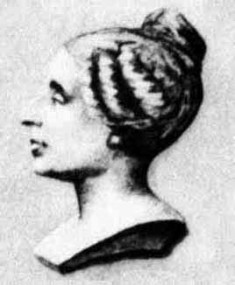| Sophie Germain | |
|---|---|
 |
|
| Mathematician | |
| Specialty | Physicist, philosopher |
| Born | Apr. 1, 1776 Rue Saint-Denis, Paris, France |
| Died | June 27, 1831 (at age 55) Paris, France |
| Nationality | French |
Born on April 1, 1776, in Paris, France, Marie Sophie Germain was a leading figure in the field of mathematics, in which she worked independently because she constantly had to struggle with society’s prejudices against female scientists; she was also a highly-appreciated philosopher and physicist.
Early Years
The second daughter of Ambroise-Francois Germain, an affluent silk merchant, and Marie-Madeline Gruguelin, Sophie grew up with her two sisters, Marie-Madeline and Angelique-Ambroise, in an imposing mansion located on Rue Saint-Denis in Paris. Due to the fact that her father was a political member of the bourgeoisie at the Estates General, she and her sisters were exposed from an early age to philosophical and political discussions.
Sophie was an avid reader as her father had a large library and she even taught herself Greek and Latin. Upon reading Montuclas The History of Mathematics, she was so fascinated by the life and death of Greek mathematician Archimedes that, at the young age of 13, she decided to pursue her studies in mathematics, despite being discouraged by her parents.
Fighting for an Education
Fearful of the ridicule associated at that time with female scientists, yet resourceful and determined, Sophie used the male pseudonym Monsieur Le Blanc in order to have access to various lecture notes for academic courses held at the Ecole Polytechnique near Paris.
When she submitted her written observations, which was a requirement of the Polytechnique, to mathematician Lagrange, the faculty member was so impressed that he requested to meet the brilliant student who turned out to be a young girl, a fact which did not bother him at all.
Sophie Germain’s early yet ingenious scientific work targeted number theory, one of her main interests after the publication of Adrien-Marie Legendre’s essay on number theory in 1798 and Carl Friedrich Gauss’s major work – Disquisitiones Aritmeticae in 1801. She corresponded with both of them and although they never met, Gauss recognized her “superior genius” in an 1807 letter as well as her ”noble courage,” referring to the obstacles faced on account of her gender.
Major Contributions to Mathematics
Germain’s most significant work in number theory involves the proof for the famous Fermat’s Last Theorem (1637), a proof which was divided into two separate cases, the first case for all odd primes less than 100. Commonly known as “Sophie Germain’s Theorem,” it was later used by mathematician L.E. Dickson to prove Fermat’s Last Theorem for odd prime numbers that are less than 1700.
In order for a prime number p to be considered a Sophie Germain prime, 2p +1 must also be prime (2p+1 is known as a safe prime). Germain’s monumental work is discussed in her 1821 essay on the elasticity theory, which was published at her own expense. Her research was significantly based on mean curvature, a term coined by the famous French mathematician herself. The mean curvature is essential in the analysis of minimal surfaces as well as of the physical interfaces between fluids in fluid mechanics.
Recognition for Her Work
This famous essay was also her third attempt at winning a competition based on the scientific experiments conducted by German physicist Ernst Chladni and which was sponsored by the French Academy of Sciences. This work – deriving an accurate differential equation for the vibration of elastic surfaces – finally won her the coveted prize on January 8, 1816, and she also remains in history as the first female scientist to win a prize awarded by the famous French learned society.
She was allowed to attend the Paris Academy of Sciences sessions for seven years later, after making friends with the Academy’ s secretary, Joseph Fourier. In 1831, posthumously, another of Germain’s important papers on the elasticity theory and curvature was published by Crelle’s Journal.
Death and Legacy
Mentored by the famous mathematician Joseph-Louis Lagrange, who supported her both morally and professionally, Sophie Germain passionately and devotedly continued her work in mathematics and philosophy until her death.
Sophie Germain passed away at the age of 55 on June 27, 1831, in Paris, France and she was buried in the Pere Lachaise Cemetery. She had been suffering from breast cancer since 1829. On her death certificate, she was listed as a property holder.
As an homage to her decisive role in the development of mathematics, in 1876 a French school for girls and a street were named after the famous mathematician. Since 2003, the Grand Prix Sophie Germain established by the French Academy of Sciences has been awarded to a researcher with a major contribution to fundamental mathematics.